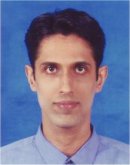Plenary Lecture
Effect of
Atmospheric Parameters on Satellite Link in Tropical Climates

Professor Mandeep Singh
School of Electrical and Electronic Engineering
USM Engineering Campus
14300 Nibong Tebal, Penang
Malaysia
E-mail: mandeeps75@yahoo.com
Abstract: The possibility of predicting rain attenuation statistics
on earth-to-space paths from rainfall rate data has been a common interest
in the past years and has expectant an extensive series of theoretical and
experimental studies. Rain attenuation is dominant in earth-to-space using
frequencies above 10 GHz, reliability of the links depends greatly on the
rainfall rate. In order to secure adequate link reliability, it is necessary
to weaken the attenuation by establishing two earth stations and diverting
the signal waves to the path of least rain attenuation. Attenuation is a
linear function proportional to distance in guided media describing the
efficiency of a particular guided media. However, this is not the case in
unguided media. Generally, attenuation in unguided media increases as the
signal frequency increases. It is the interference caused by raindrops on
electromagnetic signals traveling through atmosphere. When this phenomenon
occurs, the transmission is weakened by absorption and scattering of the
signal by raindrops. Therefore, transmissions at frequencies, especially in
Ku-band range are extremely susceptible to attenuation due to atmospheric
conditions such as rain fade.
Since majority of the studies on earth-to-space propagation have been
conducted in temperate regions, the existing prediction models may not be
sufficiently accurate to characterize the effects of attenuation on tropical
and equatorial climates. This speech aims to increase the available database
on earth-to-space propagation at Ku-band.
Brief Biography of the Speaker:
J. S. Mandeep received his B.E. (with honors) and Ph.D. degrees in
electrical and electronic engineering from the University of Notrhumbria,
UK, in 1998, and Universiti Sains Malaysia in 2006, respectively. Since
2006, he has been affiliated to Universiti Sains Malaysia as a Lecturer. His
areas of specialization are radiowave propagation in satellite communication
system, radar, antenna design, RF, and microwave. His current research
collaboration is with the Association of Radio Industries and Business (ARIB),
Japan, to analyze the rain fade at Ku-band in tropical climate using
satellite, involving countries such as Thailand, Philippines, Indonesia, and
Fiji. Mandeep has published 30 papers in journals, most in his special
field: radiowave propagation. He has also reviewed more than 30 articles in
IEEE and PIERS Journals.